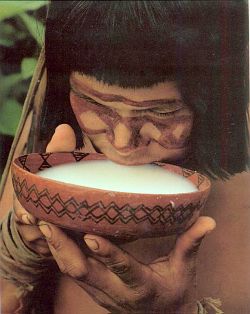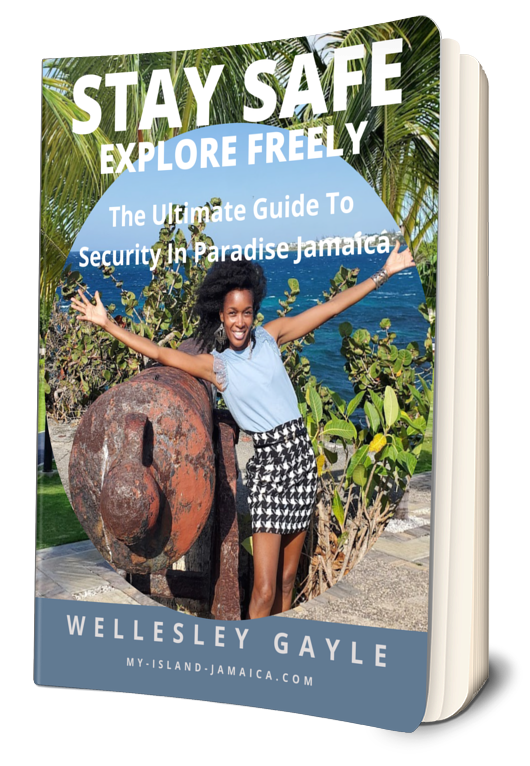Subscribe for all my updates and don't miss a thing! Sign me up!
Great Houses In Jamaica
A Portal Into The Past
Sharing Is Caring! Share this awesome content with your friends now.
by Sheree-Anita Shearer | Associate Writer
After hundreds of years of slavery and even more still, before gaining its Independence, Jamaica is still filled with reminders from that particular time in its history. One of these reminders is the many great houses across the island, some yet to be discovered.
New! Take a piece of Jamaica with you💃!
Savour the memories! Now you can get your authentic Jamaican souvenir items, as well as traditional Jamaican herbs, spices and housewares on our popular e-store. Click Here to learn more.
And, if you ever need a trustworthy and knowledgeable local guide, consider booking a private tour with us!
Today, most of these great houses are popular historical attractions for both tourists and locals alike. It seems to be an unwritten rule that schools must bring their students to a great house at some point during the school year.
It will be impossible to list all the great houses in Jamaica, but I will share a little about a few of them.
How many great houses are there in Jamaica?
I don’t think we will ever find them all, but the current number is 30. Most of those that were found, did not stand the test of time and were pretty much destroyed by the time they were found. The various rebellions did not bode well for these Plantation houses either.
Who built great houses in Jamaica?
Well, who built them? The enslaved persons of course. But who were they built for is another question. These great houses were built as the residence for the Plantation owner or overseer in charge of the property.
These buildings were built on the highest part of the land in most cases for two reasons. One, the bigger your house is, the more evident your wealth and success was and two, it is easier to see all the work that is being done from the comfort of your verandah.
What did Great Houses in Jamaica look like?
Although they could have varying designs, the most common structure is the two-storey building with wood on top and a brick structure for the foundation and first floor. They would have simple block shapes and a staircase in the centre of the living room that leads to the second floor.
It is also common for these homes to have wrap-around verandahs and jaloused windows to contend with the heat and provide adequate lighting throughout the home.
Here is a list of those we know:
Great Houses In Jamaica
- Admiral Mountain Greathouse
- Bellevue Great House
- Bloomfield Great House
- Brimmer Hall Great House
- Bromley Great House
- Cardiff Hall Great House
- Cherry Garden Great House
- Good Hope Great House
- Green Park Great House
- Greenwood Great House
- Halse Hall Great House
- Harmony Hall Great House
- Hayfield House
- Highgate House
- Liberty Hill Great House
- Minard and New Hope Estates
- Marshall's Pen Great House
- Mona Great House
- Mount Plenty Great House
- Prospect Great House
- Quebec Great House
- Ramble Great House
- Roaring River Great House
- Rose Hall Great House
- Seaman's Valley Great House
- Seville Great House
- Stokes Hall Great House
- Thetford Great House
- Tryall Great House
- York Castle Great House
Rose Hall Great House
This one, I’m pretty sure you’ve heard about before, as it is the most popular of all the great houses in Jamaica. But, let me refresh your memory. Annie Palmer, a woman said to have been as beautiful as she was ruthless. Many can’t decide whether the White Witch of Rose Hall was truly a witch or if she was actually just a cruel woman.
She was made famous for killing all three of her husbands as well as countless slaves during her time as owner of the Rose Hall and Palmyra estates in St. James. It is Rose Hall that was her primary residence and the most popular of the three. There is some doubt surrounding Annie’s death, although it is believed that she was killed by a slave lover whose granddaughter Annie had killed.
She was found strangled at her home in Rose Hall and buried on the property. Although Annie has now been dead for hundreds of years, it is a common belief that her unsettled spirit remains at the Great House.
Because of this, many go to learn more about what life was like on a plantation, to admire the architecture of the house and expansive grounds on which the house is built, and even more go to prove this theory of paranormal activity right (or wrong).
The daily guided tours will offer an even better explanation of the enigma that was Annie Palmer, the architecture and yes, the strange activities surrounding the death of the plantation woman and all the weird activities that followed. You’ll also learn of some of Annie’s famous friends.
Greenwood Estate
The Barrett family was very influential in the creation of the town of Falmouth. In fact, it is built on their land. But just outside Trelawny, you’ll find Greenwood, the location of the Greenwood estate. Their first known ancestor was Hersey Barrett who was a part of the 1655 team, sent to capture Hispaniola from the Spanish but only managed to capture the less manned Jamaica instead.
Barrett’s family slowly joined him in Jamaica and many spent their time between England and Jamaica. While his cousins, including famous poet Elizabeth Barrett-Browning, returned to England to further their education, the estate was left in the hands of Richard Barrett. Richard went on to expand on the wealth of his family and was even elected Speaker of the Assembly and Custus of St. James.
This is why the Greenwood Estate was built. Up until this point, The Barretts owned, Barrett Hall and Cinnamon Hill Estates but Richard Built Greenwood as more of an entertainment home. The 15-bedroom home was able to host the many people he was expected to in his new role. The Greenwood Estate is one of the best-kept Great Houses on the island with almost all its original pieces still intact.
This is partly due to the fact that since it was built, it has never been unoccupied, (the home is now owned by the Bettons who operate a guided tour) but a considerable factor in my opinion is that during the slave rebellion of 1831, which saw over 200 great houses go up in smoke, the Greenwood Great house was spared. It was said that Richard Barrett treated his slaves well, which was not a common theme in those days. He even taught them to read and write which was illegal at the time.
The Greenwood Great House is almost like a step back in the past, with all the original furniture, china and the 300 book collection dating back to the 1600s, still intact. The second-floor wrap-around verandah gives us some insight as to what it would have been like to look out at the beautiful Caribbean Sea.
Cherry Gardens Great House
Sitting on just 2 of the 300 acres it once commanded is the Cherry Garden Great House. It was once the home of the single most successful planter in Kingston, Ezekiel Gomersall. This is the same Gomersall, who presided over the trial of Anne Bonney and Mary Reid, famous pirates who were killed in Jamaica. Ezekiel and his first wife, Mary Dickinson Gomersall, lived together at Cherry Gardens until Mary died in 1726.
He later remarried and after his passing the home was left to his second wife, Elizabeth Garthwaite and the nephew of his first wife, Ezekiel Dickinson. Two very important names stand out when you look at the history of Cherry Gardens Estate. One George William Gordon and Jonathan Dickinson.
Jonathan Dickinson was the brother of Mary Gomersall and a famous merchantman, ship-owner, slave-trader, smuggler and author after he recounted his experience in a shipwreck off the state of Florida on his way from Port Royal, Jamaica.
His numerous letters to his brother-in-law back at Cherry Gardens provide a wealth of information to historians as both men spoke in detail about the slave trade and the cost associated with transporting the slaves from Africa.
His meticulous record-keeping for his multiple estates in Jamaica and Pennsylvania as well as his successful slave-trading operation on four continents also provides insightful information into the 1700s. Many of these can be seen at the museum in Pennsylvania.
This leads us to George William Gordon, one of our seven National Heroes. Born to Joseph Gordon and a female slave on the Cherry Garden Estate George was a free man. His father, Joseph was a Scottish attorney who was the overseer for absentee planters who chose to remain in England instead of staying in Jamaica. Joseph himself became quite wealthy after purchasing some of these very lands he was overseeing.
When George grew up and became successful in his own right, he bought the Cherry Gardens Estate where he would live until his death.
George along with Paul Bogle, another of our National Heroes, were both linked to the Morant Bay Rebellion for which they were both hanged. Cherry Gardens remained in the care of Gordon’s widow until she sold the home. Cherry Gardens is now a private property.
Great houses in Jamaica can convey so much about the past. We can see how architecture has evolved over the years and are able to tell what life was like for planters as well as slaves to some extent.
Sharing IS Caring! Please help me get the message out by sharing this article with your friends on social media (links below). Thnx ;-)
If you found this page useful, please consider subscribing to my weekly newsletter, to get even more.
It tells you each week about the new information that I have added, including new developments and great stories from lovers of Jamaica!
Return to Jamaican Historical Sites from Great Houses In Jamaica
Return to My Island Jamaica Homepage from Great Houses In Jamaican
References & Sources For Great Houses In Jamaica
- Greenwood Great House: Testimonial to two centuries of glory | Lead Stories | Jamaica Gleaner, https://jamaica-gleaner.com/gleaner/20111119/lead/lead6.html
- Cherry Garden Great House, https://jamaicagreathouses.com/cherrygardens/index.html
- 15 Great Houses In Jamaica —diG Jamaica, http://digjamaica.com/m/overview/great_houses/
- Greenwood Great House,https://www.greenwoodgreathouse.com/
- Greathouse's (Plantation houses), http://www.jnht.com/greathouses.php
New! Get My Latest Book👇🏿
|
You asked, I've answered! You no longer need to save for months or years, to enjoy paradise! I spilled the beans! sharing my top tips on finding cozy accommodations and secret gems, only the way a native could! Click Here to pick it up on my e-store and start saving now! |
See The Best Of Jamaica - In Videos!
|
My channel reaches over 140,000 subscribers worldwide and has leveraged over 11 million views, sharing, what I call 'The Real Jamaica'. Subscribe today and join our family of viewers. |
Read More ...
New! Experience The REAL Jamaica!
Book Your Private Tour here and experience Jamaica the way we (locals) do!
P.S. Didn't find what you were looking for?
Still need help?
Click Here to try our dependable and effective Site Search tool. It works!
Or, simply click here and here, to browse my library of over 500 questions and answers! Chances are someone already asked (and got an answer to) your question.














New! Comments
Have your say about what you just read! Leave me a comment in the box below.